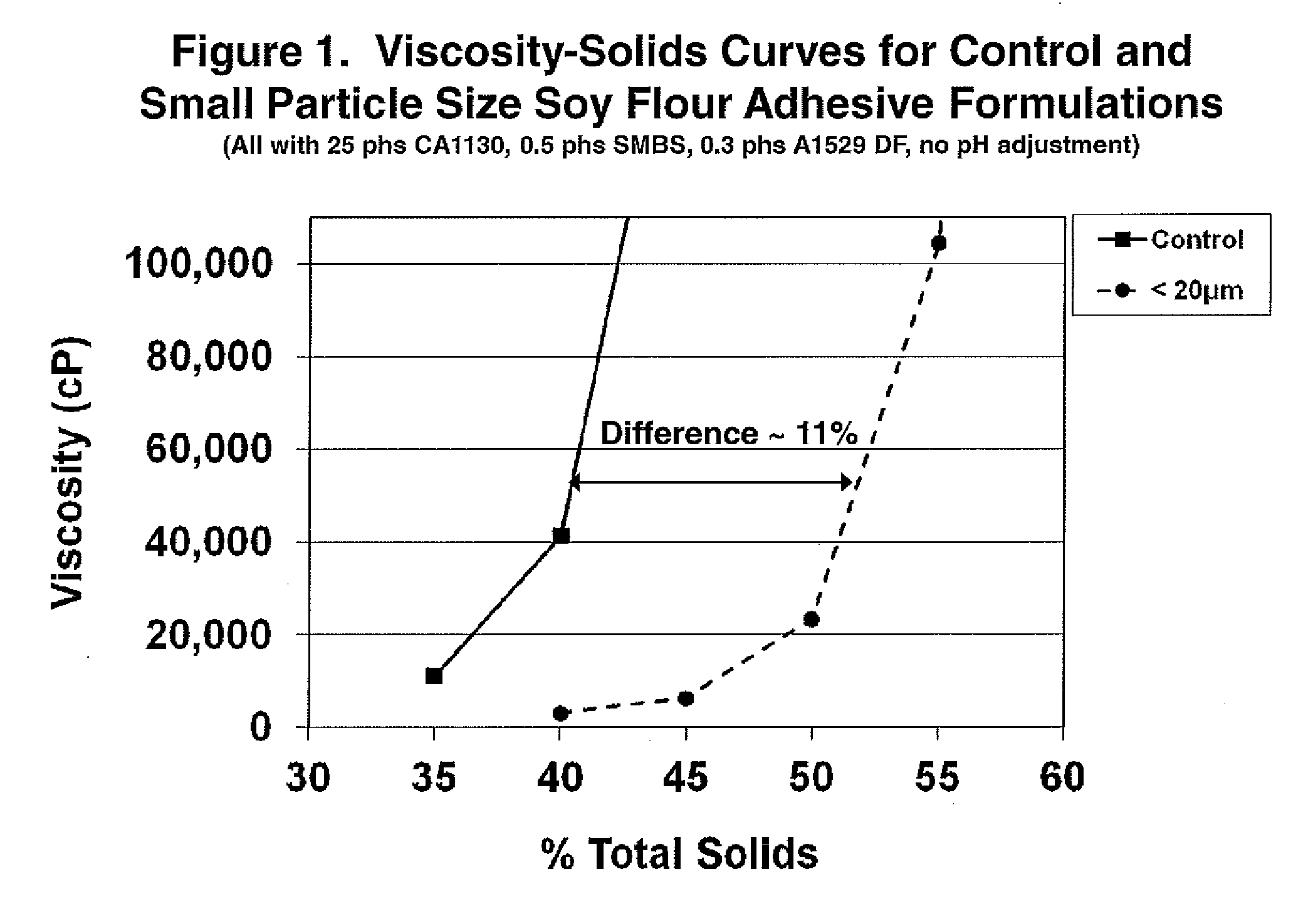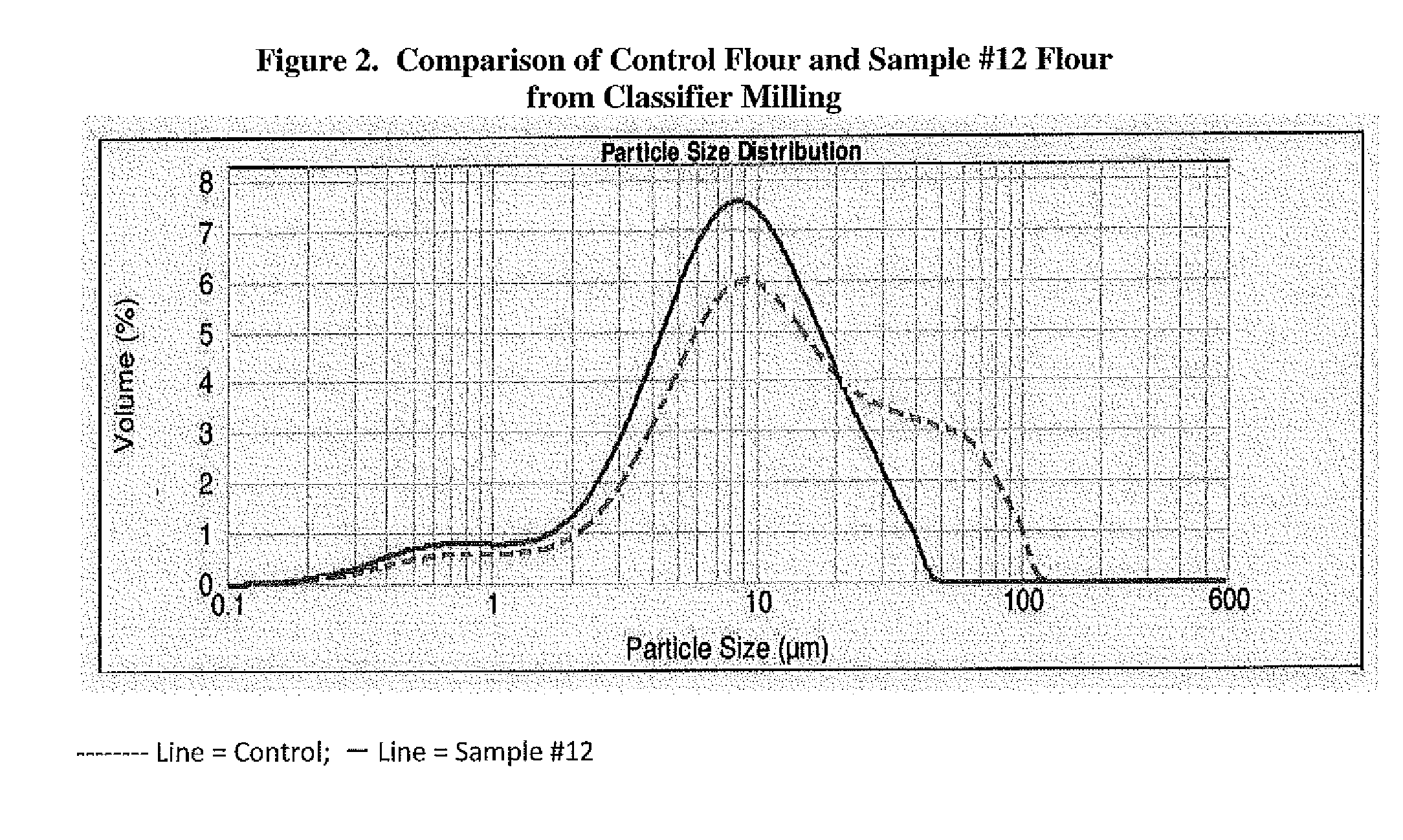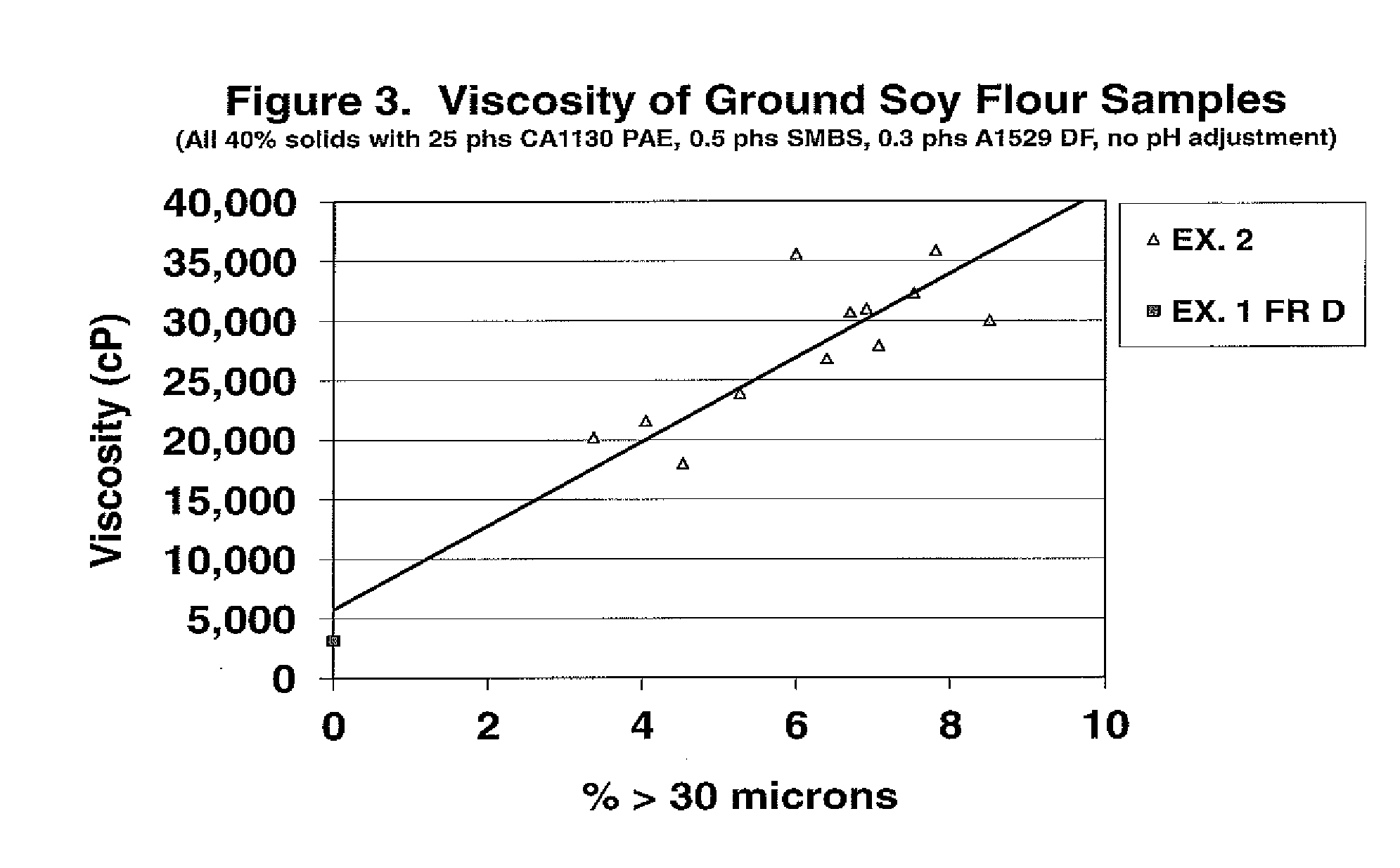Soy-based adhesives with improved lower viscosity
a technology of soy-based adhesives and compositions, which is applied in the field of soy-based adhesive compositions, can solve the problems of difficulty in preparing an alkaline ph adhesive formulation, and achieve the effect of reducing viscosity and low viscosity
- Summary
- Abstract
- Description
- Claims
- Application Information
AI Technical Summary
Benefits of technology
Problems solved by technology
Method used
Image
Examples
example 1
[0029]A sample of Prolia 200 / 90 defatted soy flour (available from Cargill Inc., Minneapolis Minn.) was used for these experiments. The manufacturer's specification for this product states that at least 95% of the particles will pass through a 200 mesh (74 μm) screen. This material was fractionated using screens having mesh sizes of 200 (74 μm), 400 (37 μm) and 635 (20 μm). This operation gave four separate fractions of the flour having defined particle sizes. These results are summarized in Table 1.
TABLE 1Sieve Fractionation of Soyad TS9200 FlourParticleAmount SievedFractionMesh SizeSizeMass%A>200 mesh >74 μm9.298.5%B400 mesh37-74 μm19.1117.5%C635 mesh20-37 μm11.8510.9%D 68.7163.1%
[0030]The above flour fractions were used to prepare water-based adhesive formulations in combination with a polyamidoamine-epichlorohydrin (PAE) curing agent, sodium metabisulfite viscosity modifier and an added defoamer (Advantage 1529 defoamer). The adhesive formulation is shown in Table 2. This formul...
example 2
[0036]A soy flour grinding / separation trial was performed to produce a large quantity of small particle size flour. This trial was performed using a classifier mill available from Prater-Sterling, Bolingbrook Ill. With this type of mill the larger particles are recycled to the grinder to be ground further. The particle size distributions of the trial samples were measured using a Malvern particle size analyzer. Analysis of a control sample showed that about 22% of the particles above 30 microns. Several different settings for the classifier mill were varied yielding 11 samples of about two to three pounds each having from 3.4% to 8.5% of the particles above 30 microns. The final settings yielded flour having about 3.4% of the particles greater than 30 microns. A large quantity of flour (88#) was milled using these settings.
[0037]The process conditions used and the properties of the various samples generated in the grinding trial are shown in Table 5. Most of these were from runs tha...
example 3
[0043]Adhesive formulations were prepared to provide a comparison of Cargill Prolia 200 / 90 soy flour (Cargill Inc., Minneapolis Minn.) and Honeysoy F90 (CHS Inc, Inver Grove Heights, Minn.). The Prolia 200 / 90 flour had an average particle size of 24μ with 27.9% of the particles larger than 30 μm as analyzed with a Sympatec Helos particle size analyzer. The Honeysoy F90 flour was specified to have a granulation such that 95% of the flour would pass through a 325 mesh screen. This sample had an average particle size of 16 μm with 9.6% of the particles larger than 30 μm as analyzed with a Sympatec Helos particle size analyzer. Lower (40.2%) and higher (44.7%) solids formulations were prepared to provide a comparison of adhesive formulations having equivalent viscosity with the two types of flour. The Prolia 200 / 90 flour in the 40.2% solids formulation gave a similar viscosity to the Honeysoy F90 sample in the 40.2% solids formulation. A 44.7% solids formulation was also prepared using ...
PUM
| Property | Measurement | Unit |
|---|---|---|
| particle size | aaaaa | aaaaa |
| particle size | aaaaa | aaaaa |
| particle size | aaaaa | aaaaa |
Abstract
Description
Claims
Application Information
 Login to View More
Login to View More - R&D
- Intellectual Property
- Life Sciences
- Materials
- Tech Scout
- Unparalleled Data Quality
- Higher Quality Content
- 60% Fewer Hallucinations
Browse by: Latest US Patents, China's latest patents, Technical Efficacy Thesaurus, Application Domain, Technology Topic, Popular Technical Reports.
© 2025 PatSnap. All rights reserved.Legal|Privacy policy|Modern Slavery Act Transparency Statement|Sitemap|About US| Contact US: help@patsnap.com



